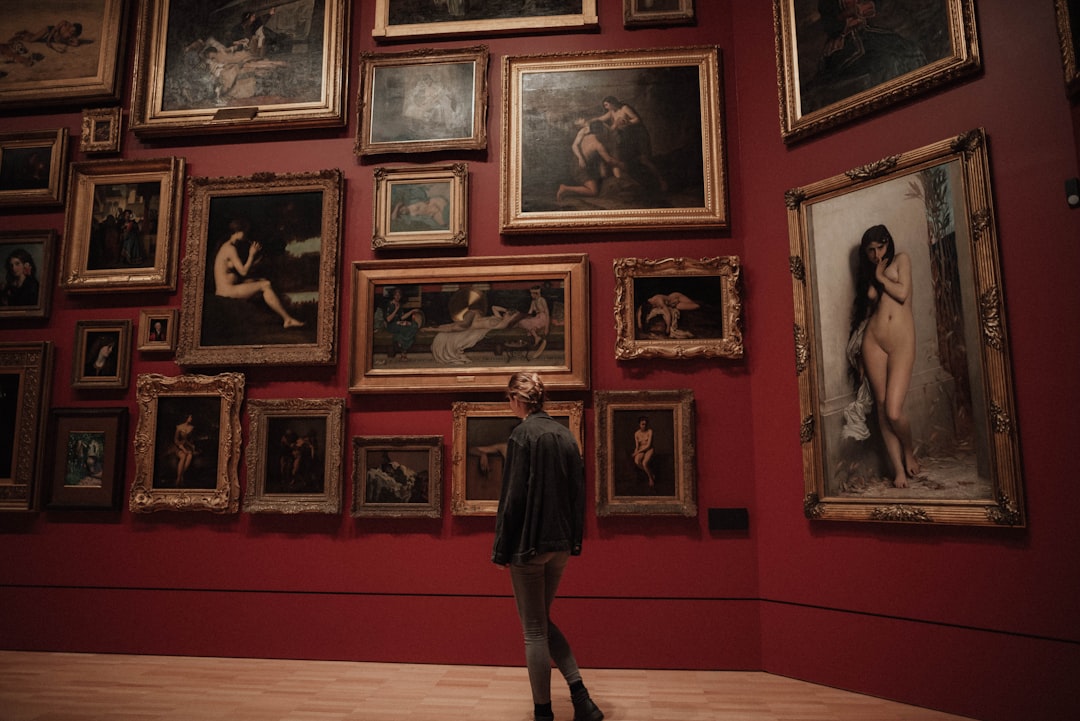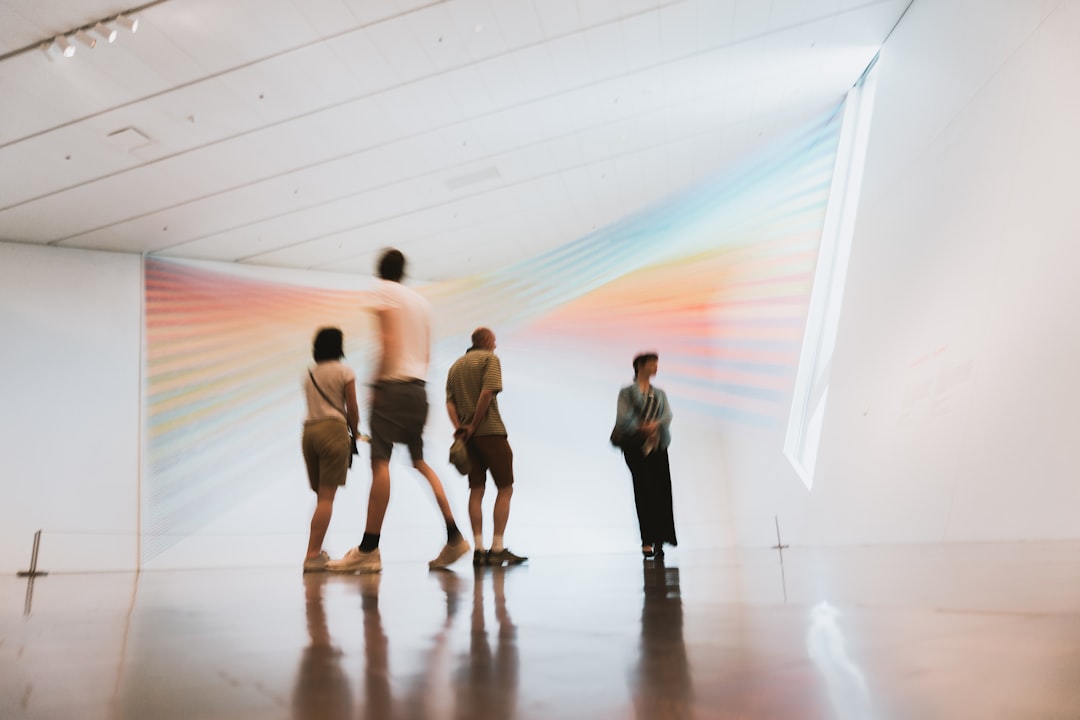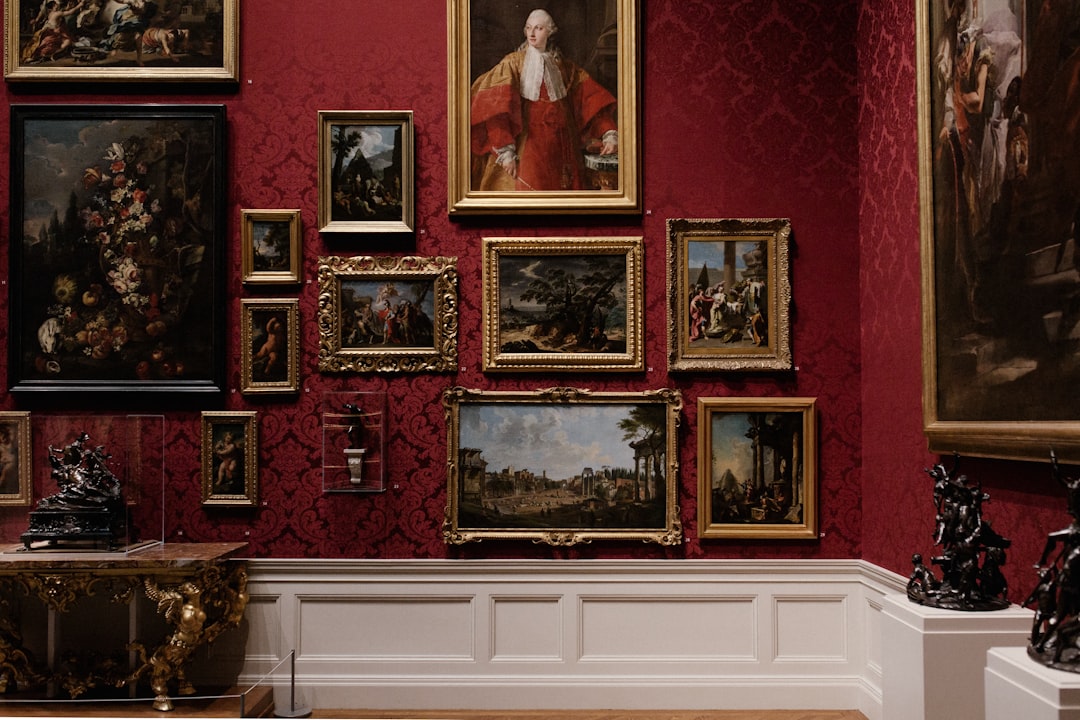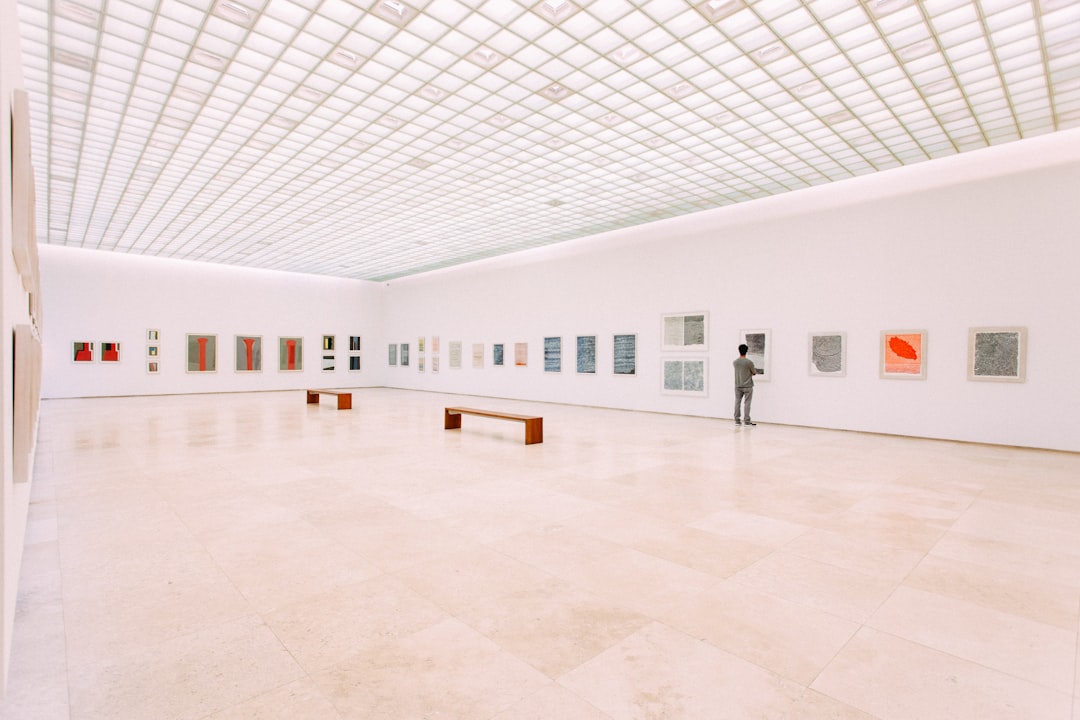

Engage prospects with a scan and streamline customer engagement with FREE QR code marketing tools by Sona – no strings attached!
Create a Free QR CodeFree consultation

No commitment

Engage prospects with a scan and streamline customer engagement with FREE QR code marketing tools by Sona – no strings attached!
Create a Free QR CodeFree consultation

No commitment
Museums are embracing a wave of digital transformation, striving to create richer, more interactive experiences while addressing changing visitor expectations. Historically, guiding visitors through museum exhibits relied on static signage, audio guides, or printed brochures, resources that often fell short of delivering personalized, accessible journeys. As audiences demand dynamic storytelling and deeper engagement, QR code technology has emerged as a bridge amid a broader QR resurgence, connecting physical artifacts to digital stories and advancing museum digital transformation and accessibility.
Today’s museum professionals face numerous operational challenges: engaging visitors from diverse backgrounds, tracking evolving interests in real time, and competing for attention in an increasingly digital world. Often, valuable insights into visitor behavior such as which exhibits attract interest or which visitors are likely to support future campaigns go uncollected or unutilized, leaving high-value opportunities under the radar. QR codes in museums, as outlined in Sona QR’s art use cases, address these needs by unlocking interactive experiences, enabling real-time feedback, and capturing valuable visitor analytics, all while reducing friction in the visitor journey and minimizing physical material costs.
By harnessing QR codes, museums can promote sustainable practices, offer accessible content in multiple languages, and most critically, surface key engagement signals that help teams spot high-interest prospects, prevent missed connections, and optimize the visitor experience. This article explores strategic, scalable frameworks that museums can adopt to better showcase collections, understand audience behavior, and deliver measurable ROI through QR-powered engagement and integrated digital workflows.

QR codes bridge the gap between static artifacts and immersive digital storytelling in the museum sector, enabling interactive experiences and raising engagement with minimal disruption. Visitors do not need to download an app or pick up a device. They simply scan and access content tailored to the moment they are in: an artifact, a gallery, or a program.
To replace outdated processes and reach measurable outcomes, think of QR codes as new, flexible touchpoints. Paper brochures, one-size-fits-all audio guides, and manual sign-up sheets can be reimagined as dynamic, trackable experiences that invite participation. When paired with clear calls to action and thoughtful placement, QR codes turn curiosity into a series of actions that build engagement and insight.
These approaches streamline workflows and reduce missed opportunities, while giving museum teams a clearer picture of what resonates. Platforms such as Sona QR can simplify campaign deployment, centralize code management, and provide actionable analytics across exhibitions, events, and communications.

Museums are uniquely positioned at the intersection of physical artifacts and digital discovery. QR codes solve a set of persistent challenges that arise when exhibits, programs, and audiences converge. They help institutions modernize without abandoning the intimacy and authenticity of a gallery visit.
Consider how typical museum materials perform today. Labels are static and space-constrained. Maps are printed once per season and rarely reflect real-time changes. Membership brochures, donation forms, and event flyers put the burden on visitors to take action later at home. QR codes make action immediate, measurable, and personalized. For museums, the AAM outlines inexpensive QR ideas.
When museums align QR codes with their most common materials and workflows, they get a practical, sustainable upgrade to how visitors discover, learn, and act.

QR codes are not a one-size-fits-all tactic. Different formats and destinations excel in different situations. The most effective deployments start with the experience you want to create, then select the QR type that best delivers it.
Think about your visitor’s needs. Do they want more context about a specific object, a short audio description, or a translation? Do they need to connect to Wi-Fi to stream a longer video or explore a digital collection? The right format helps you deliver value quickly, then enrich over time.
Selecting dynamic QR codes for formats that change often gives you flexibility and reliable measurement. When paired with a platform such as Sona QR, you can centralize creation and management, update destinations as exhibitions evolve, and ensure content stays accurate across your spaces.

Many revenue and engagement opportunities hide in plain sight because interactions across the museum are disconnected. When touchpoints are redesigned with QR codes, the visitor journey becomes more fluid, and valuable signals become visible.
Start by mapping where visitors already pause or make decisions: labels, benches, signage, maps, counters, and the exit. Then determine what action is most useful in those moments, and design QR-enabled prompts that guide people forward.
By placing QR codes thoughtfully, you create an experience where curiosity naturally leads to deeper discovery, while your team gains visibility into preferences that were previously guesswork.
QR codes shine when they connect a specific physical moment to a meaningful digital outcome. Rather than trying to do everything with one code, match each use case to a key decision or learning point, then measure what happens next.
Museums that do this well see lift across engagement, feedback, and conversion metrics. They also learn which stories capture imaginations and which offerings deserve another look. Below are three high-impact applications to consider.
Each use case makes a previously invisible interaction measurable. With appropriate consent and privacy safeguards, those signals can feed your CRM, enabling nimble retargeting and more relevant communications.
Every scan reflects real behavior in context: what an individual cared about, where they were, and when they engaged. By deploying multiple QR codes across galleries, events, and printed materials, you can segment your audience automatically and build retargeting lists based on evidence rather than assumptions. For tactical next steps, see Sona’s Playbook Intent-Driven Retargeting.
The key is to tag QR codes with purpose. When you design campaign architecture up front, each scan enriches a profile or audience segment, which unlocks personalized messaging later. This is how anonymous traffic becomes known advocates and supporters over time.
A platform like Sona QR streamlines this process by turning each code into a smart entry point. Your team gains a real-time picture of who to follow up with, what to offer, and when to reach out.
Disconnected campaigns lead to inconsistent messages and missed chances to convert interest into participation. QR codes knit together offline and online touchpoints so every poster, flyer, video, and event becomes a measurable step in the journey.
Start by identifying the channels you use most: print collateral for exhibitions, social content for community building, direct mail for membership renewals, and digital signage for on-site engagement. Add QR codes that make the next action obvious and painless, then unify reporting so you can see which channels pull their weight.
When all codes are created and managed in a single system, you can align branding, consolidate analytics, and sync scan data to your CRM and ad platforms. This reduces duplication of effort and ensures that each campaign reinforces the overall visitor experience.
Launching a QR initiative is not only about printing codes. It is a process of defining goals, selecting the right formats, and building a feedback loop that improves results. A clear checklist keeps teams aligned and minimizes guesswork during rollout.
Use the following steps as a practical blueprint for exhibitions, events, and cross-channel campaigns. Share the checklist with curators, educators, marketers, and visitor services so everyone understands how QR adds value at each stage of the visitor journey.
Clarify what you want to achieve. Do you want to boost on-site engagement with multimedia stories, capture more feedback at the exit, or drive digital content consumption that continues after the visit? Select a focused use case and identify where it fits within the visitor journey.
Translate your goal into a measurable outcome. For example, increase audio guide completion by 25 percent, gather 500 more survey responses per month, or grow newsletter subscriptions by 15 percent among exhibit scanners. Clear targets shape every downstream decision and make success visible.
Decide whether a static or dynamic code fits your needs. Static codes are appropriate for long-lived destinations that rarely change, such as a permanent collection overview. Dynamic codes are better when you need to update links, run A/B tests, or capture analytics for optimization.
For use cases that involve content iteration, attribution, or audience tagging, choose dynamic codes. With Sona QR, you can update destinations, append UTM parameters, and view performance by code without reprinting your materials.
Design for scanning and comprehension. Incorporate your logo or motif, use high contrast, and frame the code with a clear call to action such as Scan to hear the artist or Scan for translations. Position codes at a comfortable height and distance based on the viewing context.
Test across devices, lighting, and crowd conditions. Validate that the destination loads quickly, works on iOS and Android, and is accessible with alt text, captions, and adjustable text size. A small pilot in one gallery can surface issues before a wider rollout.
Place codes where attention is high and action is obvious. In galleries, use labels, pedestals, or wall graphics. In common areas, use posters, floor decals, and table tents. In print, add codes to brochures, member mailers, and event programs.
Sequence placements to reflect the visitor journey. For example, awareness-level content can live at entrances, deep dives beside artifacts, and conversion prompts near the exit. Consistent design and messaging help visitors recognize QR opportunities across the building.
Measure scans, completions, and downstream actions. Look for patterns by time of day, gallery, and content type. Use A/B testing to refine calls to action, media length, and placements. If scan rates are low, adjust signage visibility or simplify the message.
Feed insights back into program decisions. Extend popular content, sunset underperforming pieces, and identify prospects who show high interest. With Sona QR analytics, you can sync scan data to your CRM, trigger nurture flows, and attribute revenue or membership conversions to specific campaigns. For CRM execution, see Sona’s blog post Integrate Sona with HubSpot CRM.
Many museums struggle to connect on-site engagement to tangible outcomes such as memberships, donations, or program participation. Knowing that a code was scanned is helpful, but it becomes meaningful when you can see what happened next and which touchpoints contributed to the result.
Modern analytics close this loop, including offline attribution. When a visitor scans a code and interacts with content, you can record the source, context, and downstream actions. Over time, a visitor’s digital footprint reveals patterns that inform budgets, staffing, and strategy. Museums can invest in what works, and adjust what does not, with confidence.
By turning on-site interactions into reliable data, museums can tell a clear story about how digital engagement contributes to mission and revenue goals. This builds internal alignment and unlocks smarter investments in content and technology.
QR codes work best when they are visible, meaningful, and integrated with the systems that power your marketing and operations. Small adjustments to design and process can double or triple impact, especially in high-traffic galleries and events.
Equally important is the human element. When staff understand the value of QR experiences and promote them confidently, visitors follow suit. Train teams to demonstrate scanning, point out benefits, and encourage feedback. The result is a virtuous cycle of higher engagement and better data.
Creative application: Design a digital scavenger hunt linked to key exhibits. Encourage visitors to collect scans to unlock a final reward such as an exclusive video or small discount in the shop. This motivates repeat engagement and reveals patterns of cross-exhibit interest that inform future curation and programming.

Seeing how peers implement QR codes can clarify what to try and what to avoid. The examples below demonstrate how modest changes to labels, programs, and mailings can yield measurable improvements in engagement and insight.
One modern art museum embedded QR codes in its galleries that linked to short curator interviews and behind-the-scenes videos. Over a single exhibition cycle, the team saw a 35 percent lift in digital content consumption and identified three audience segments with distinct content preferences. The museum then tailored follow-up emails and saw a notable rise in return visits.
A regional history museum confronted low survey response rates that left staff guessing about visitor satisfaction. By placing QR feedback prompts at exits and in the café, the museum increased responses fivefold compared to paper forms. This revealed pain points around wayfinding and inspired a redesign of signage and routes.
These stories show that QR codes are not simply a technology overlay. They are a strategic tool that illuminates audience behavior, supports accessibility, and closes the loop between inspiration and action.
Effective QR deployments share a few traits: clear intent, thoughtful placement, accessible content, and reliable measurement. When these building blocks are in place, museums can scale with confidence and improve with each exhibition cycle.
Conversely, common pitfalls can erode trust and reduce participation. Poor connectivity, confusing instructions, or outdated content can cause visitors to ignore QR prompts. Address these risks up front to protect the visitor experience and maintain credibility.
Tips:
Common pitfalls:
QR codes have matured into a central pillar of museum digital transformation. They turn overlooked moments into opportunities for enrichment and connection, while delivering the analytics that leaders need to invest wisely. With an intentional framework and continuous optimization, QR-powered experiences can raise participation, deepen understanding of audiences, and support long-term growth.
As museums balance tradition and innovation, QR code engagement provides a practical path forward. Start small, measure relentlessly, and iterate often. With platforms like Sona QR for code management and Sona for attribution and activation, your team can connect scans to outcomes and build a repeatable, data-informed model for visitor engagement. Start creating QR codes for free. For identity resolution and multi-touch attribution beyond the walls, explore Sona.
QR codes have revolutionized the museum experience by transforming static exhibits into interactive, engaging journeys that deepen visitor connection and learning. Whether it’s enhancing visitor engagement, providing enriched educational content, or enabling personalized tours, QR codes create seamless, mobile-friendly interactions that capture valuable insights into audience behavior and preferences. Imagine knowing exactly which exhibits captivate visitors most and instantly adapting your content to keep them coming back.
With Sona QR, museums can effortlessly create dynamic, trackable QR codes that update in real time—no reprinting required. This means you can measure engagement, tailor experiences, and connect every scan to meaningful outcomes like increased membership sign-ups or event attendance. Unlock the full potential of your museum’s digital engagement and make every visitor interaction count.
Start for free with Sona QR today and transform each scan into a powerful tool for growing your museum’s reach and impact.
QR codes can be placed on exhibit labels, display cases, signage, brochures, and event materials to connect physical artifacts to digital content like multimedia stories, translations, feedback forms, and membership sign-ups.
QR codes offer interactive experiences, real-time feedback, visitor analytics, cost efficiency, dynamic content updates, multilingual accessibility, and help museums track visitor engagement to optimize programming and marketing.
QR codes provide multilingual content, transcripts, audio with captions, and language selection options that make exhibits accessible to diverse audiences without overcrowding physical displays.
Museums use QR codes for interactive exhibit stories, digital scavenger hunts, instant feedback collection, membership sign-ups, wayfinding assistance, event check-ins, and linking gift shop merchandise to product stories.
QR codes enable visitors to instantly access tailored digital content without apps, reduce friction by replacing paper materials, allow personalized and dynamic storytelling, and encourage participation that deepens engagement.
Museums use web link QR codes for deeper content, form QR codes for feedback and sign-ups, audio and video guide codes, multilingual content codes, and Wi-Fi access codes to improve connectivity.
Museums track scan data including time, location, and device, measure engagement by channel, use real-time dashboards to optimize placements and content, and sync data with CRMs to connect scans to memberships, donations, and attendance.
Successful deployment includes placing codes where attention is high, using clear calls to action, ensuring device compatibility, training staff as QR advocates, offering accessible content, and regularly updating QR destinations.
Museums should avoid poor connectivity zones, overloading exhibits with too many codes, neglecting privacy transparency, and letting QR code content become outdated to maintain trust and participation.
By tagging QR codes with themes, content categories, and context, museums can segment visitors based on scan behavior, sync data to CRMs, and send personalized follow-ups that convert visitors into members and supporters.
Use Sona QR's trackable codes to improve customer acquisition and engagement today.
Create Your FREE Trackable QR Code in SecondsJoin results-focused teams combining Sona Platform automation with advanced Google Ads strategies to scale lead generation

Connect your existing CRM

Free Account Enrichment

No setup fees
No commitment required

Free consultation

Get a custom Google Ads roadmap for your business






Launch campaigns that generate qualified leads in 30 days or less.
